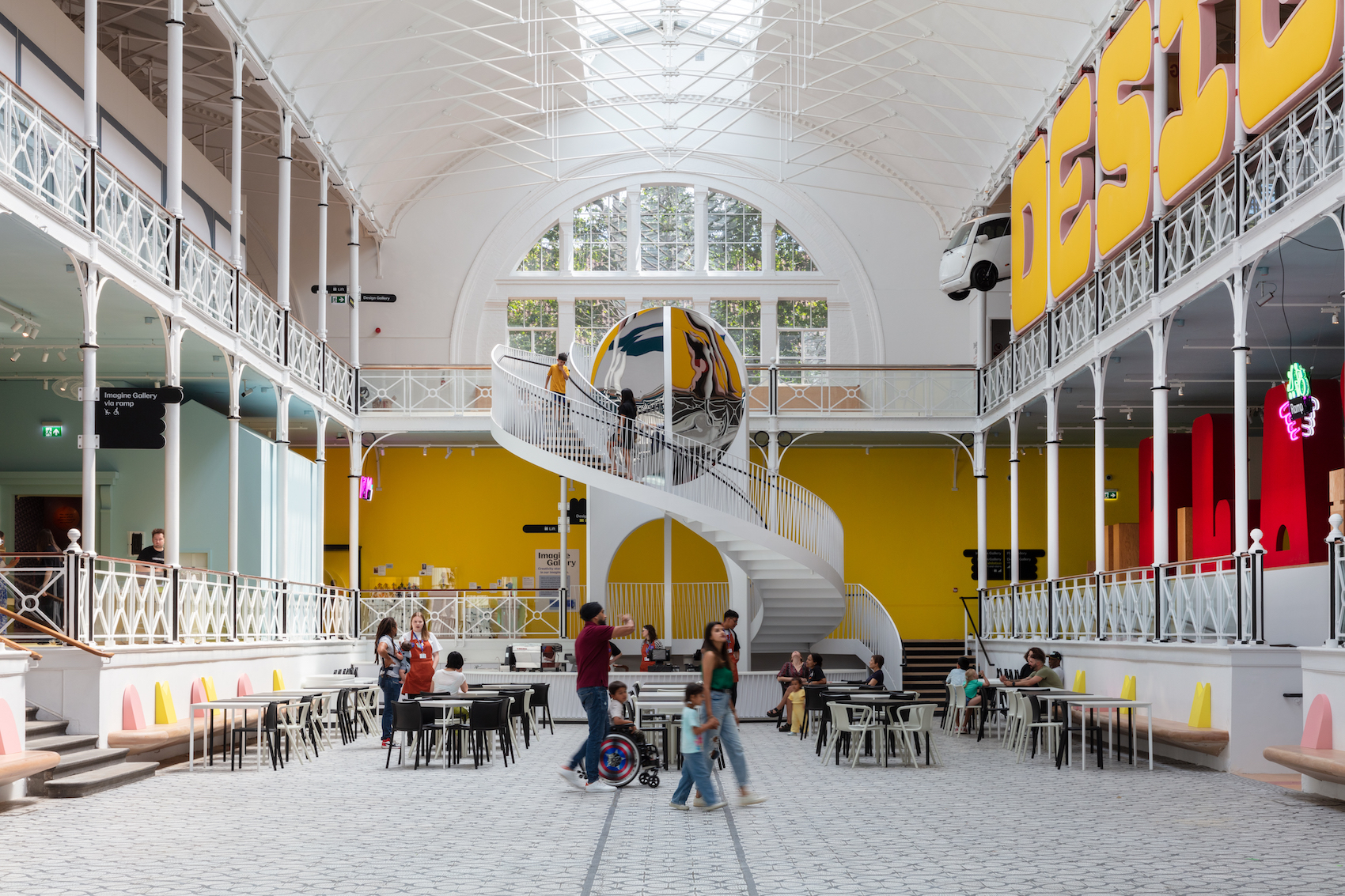AOC and De Matos Ryan have transformed the V&A’s former Museum of Childhood in east London into a state-of-the-art visitor experience aimed at fostering the next generation of artists, thinkers, makers and innovators.
Photos
Luke Hayes and David Parry (courtesy of the Victoria and Albert Museum)
Designed by AOC, in collaboration with De Matos Ryan, Young V&A is the UK’s first museum of art, design and performance created with and for young people. The three-year, £13m redevelopment of The V&A’s Grade II* listed former Museum of Childhood in east London comprises three new galleries, a suite of workshop and learning spaces, a purpose-built 515-square-metre exhibition gallery, a shop and café. More than 22,000 schoolchildren, teachers, Special Education Needs and Disabilities (SEND) and community groups, families, and local people helped shape the project, which showcases the transformative power of creativity alongside some 2000 works from the V&A’s collections.
A feature staircase articulates the centrally-located Town Square
The building’s central Town Square is surrounded by three permanent galleries and a new temporary exhibition gallery, with learning studios and a workshop on the lower-ground floor. The three new galleries – Play, Imagine and Design – are designed with different age groups in mind, from babies to teens, but are open for all to explore. Each one incorporates new interactives and activities inspired by the collections where children and their families can express their creativity.
The Stage in the Imagine Gallery
Situated on the north side of the plan, the Imagine Gallery comprises a sequence of immersive spaces that provide a range of atmospheres, intimacies and acoustics. At the heart of the gallery is The Stage, a red oval-shaped performance space designed to host the museum’s daily programme and provide a platform for children to perform their own shows.
The Arcade in the Play Gallery
Conceived as an open landscape overlooking the museum gardens, the Play Gallery is located on the southern side of the plan. The Mini Museum provides an innovative gallery experience for pre-walkers and their families, extending the sensory experience of collection objects beyond the case with tactile materials and multi-generational interaction. Specified for their performative qualities, soft, textured materials line the floor, walls and ceiling.
The Factory in the Design Gallery
The Design Gallery is situated on the first floor and combines immersive gallery rooms with flexible open spaces. Tabletop displays inspired by design studio workbenches show contemporary objects, with showcases wrapped around the galleries displaying objects from the collection. A hemp-clad studio for a resident designer provides active display windows with sliding doors to support planned and spontaneous communal activities.
Play Gallery, view across the Mini Museum
The project also celebrates and restores the building’s existing Victorian architecture. Original windows have been uncovered allowing daylight to flood into the space, and the 19th century marble mosaic floor has been restored and revealed. Spaces have been designed with a focus on accessibility and inclusivity, with significant improvements to circulation and noise.
Sustainability is central to the scheme with existing museum showcases being carefully repurposed and adapted for new displays. Timber from former gallery storage has been reused for new display tables, while reclaimed timber studs from temporary exhibitions have been reused for support structures, and rubble from the building adaptation works has been reused to make terrazzo worktops.
Elsewhere, The Factory and The Shed ‘sample’ the roof trusses and original ‘Brompton Boilers’ cladding profile to create new structures evocative of east London’s industrial heritage. Their expressed components are designed for future re-assembly, and are clad with corrugated, low-carbon, hemp-fibre sheets.
Additional Images
Credits
Architects
ACO, De Matos Ryan
Structural engineer
Price & Myers
Services engineer
P3r
Quantity surveyor
Greenways
Source: Architecture Today








